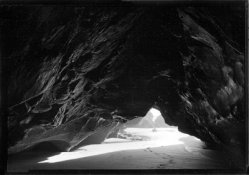It could, but just experiment with extending good ole D76 times. Buy a transmission step wedge. They are necessary for calibrating your process, unless you want to throw a lot of stuff away and was a lot of time, and can be used to optically compare with on a light box to determine negative denisty without a densitometer.
Platinum and Palladuim, as far as I am aware, are contact processes. I am going to get there some day, but for now, I am learning with the much less expensive cyanotype process. I find it needs at least a delta log denisty of 1.8-2.0.
I take regularly developed for silver gelatin negs from my camera(s), with delta log density range of perhaps 1.2 (unless I screw up and accidentlally over-develop, which then become a part of my alt process "Betty" range of negs) ) , and then project them onto lith film, whch I then develop using a low cotrast developer to get a continuous tone positive.
I then contact dupe it using the enlarger as a light source onto another lith film exposed and then develop it to get an enlarged neg of the right delta log density. It is contacted with my coated paper in my UV exposer to get the alt process print. I have toyed with doing reversal processing of the first gen lith enlarged exposure to go straight to the neg, but have not got that far along with my experiments. Some day there will be kids that want nothing to do with me, or retirement and I can go at this whole hog. Until that time, I roll with the punches and nibble away at my hobbies and interests.











